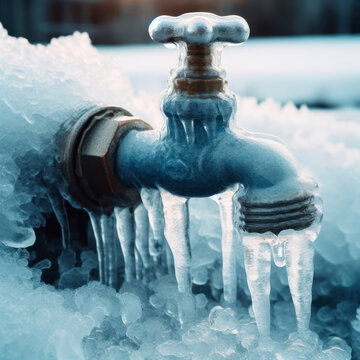Presented here in the next paragraphs you will discover more reliable insights related to Winter Plumbing Precautions: Preventing Frozen Pipes.

Cold weather can ruin your plumbing, particularly by freezing pipes. Here's exactly how to avoid it from happening and what to do if it does.
Introduction
As temperature levels drop, the threat of icy pipelines increases, potentially leading to expensive repair work and water damage. Comprehending exactly how to prevent icy pipes is vital for home owners in chilly environments.
Recognizing Frozen Pipes
What triggers pipelines to ice up?
Pipes ice up when exposed to temperatures below 32 ° F (0 ° C) for prolonged durations. As water inside the pipelines ices up, it increases, putting pressure on the pipe wall surfaces and possibly causing them to burst.
Risks and damages
Frozen pipelines can result in water system interruptions, home damages, and pricey repairs. Ruptured pipes can flooding homes and create considerable architectural damage.
Signs of Frozen Piping
Determining icy pipes early can avoid them from bursting.
Just how to determine frozen pipelines
Look for decreased water circulation from faucets, uncommon odors or sounds from pipelines, and noticeable frost on subjected pipes.
Avoidance Tips
Shielding susceptible pipes
Cover pipes in insulation sleeves or make use of heat tape to secure them from freezing temperature levels. Concentrate on pipelines in unheated or external areas of the home.
Home heating strategies
Keep interior spaces adequately warmed, specifically locations with plumbing. Open cupboard doors to enable warm air to circulate around pipes under sinks.
Shielding Outside Pipes
Garden hose pipes and exterior taps
Detach and drain yard hoses prior to wintertime. Install frost-proof faucets or cover outdoor faucets with insulated caps.
What to Do If Your Pipes Freeze
Immediate actions to take
If you think frozen pipes, keep taps open up to soothe stress as the ice melts. Make use of a hairdryer or towels soaked in hot water to thaw pipelines gradually.
Long-Term Solutions
Structural changes
Think about rerouting pipes away from exterior wall surfaces or unheated areas. Include extra insulation to attics, basements, and crawl spaces.
Updating insulation
Buy high-quality insulation for pipes, attic rooms, and walls. Correct insulation helps preserve consistent temperature levels and lowers the threat of icy pipelines.
Verdict
Protecting against icy pipes requires proactive actions and fast feedbacks. By understanding the causes, indicators, and preventive measures, homeowners can secure their plumbing during winter.
5 Ways to Prevent Frozen Pipes
Drain Outdoor Faucets and Disconnect Hoses
First, close the shut-off valve that controls the flow of water in the pipe to your outdoor faucet. Then, head outside to disconnect and drain your hose and open the outdoor faucet to allow the water to completely drain out of the line. Turn off the faucet when done. Finally, head back to the shut-off valve and drain the remaining water inside the pipe into a bucket or container. Additionally, if you have a home irrigation system, you should consider hiring an expert to clear the system of water each year.
Insulate Pipes
One of the best and most cost-effective methods for preventing frozen water pipes is to wrap your pipes with insulation. This is especially important for areas in your home that aren’t exposed to heat, such as an attic. We suggest using foam sleeves, which can typically be found at your local hardware store.
Keep Heat Running at 65
Your pipes are located inside your walls, and the temperature there is much colder than the rest of the house. To prevent your pipes from freezing, The Insurance Information Institute suggests that you keep your home heated to at least 65 degrees, even when traveling. You may want to invest in smart devices that can keep an eye on the temperature in your home while you’re away.
Leave Water Dripping
Moving water — even a small trickle — can prevent ice from forming inside your pipes. When freezing temps are imminent, start a drip of water from all faucets that serve exposed pipes. Leaving a few faucets running will also help relieve pressure inside the pipes and help prevent a rupture if the water inside freezes.
Open Cupboard Doors
Warm your kitchen and bathroom pipes by opening cupboards and vanities. You should also leave your interior doors ajar to help warm air circulate evenly throughout your home.

As a fervent person who reads about Winter Plumbing Precautions: Preventing Frozen Pipes, I figured sharing that piece of content was a good thing. Appreciated our write up? Please share it. Let another person locate it. Thanks a lot for taking the time to read it.
Go Services